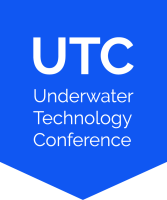
Welcome to the 32nd
Underwater Technology Conference
At Grieghallen in Bergen, Norway
15-17 June 2027
Developing cost-effective solutions for offshore wind will be key to ensure that the expected growth in this sector will materialize and hence contribute to the energy transition and reaching our net-zero targets. The power transmission infrastructure of offshore windfarms is a major part of the overall cost, both in terms of capex but also opex. Today, the traditional way of collecting and transferring the power from the wind farm is by using offshore substations which principally is a conventional O&G platform without the hydrocarbons. The offshore substation is a heavy and costly unit and for deeper waters also needs to be floating with the additional challenges related to power cables and anchoring dynamics. The substation also contains a substantial amount of auxiliary equipment, such as fans and pumps, to account for the large environmental variations that occur offshore, i.e., large HVAC systems to control and maintain stable temperatures. This equipment also requires maintenance and therefore the need to transport and host service personnel both for regular intervals but also for unexpected incidents, with their associated risks and HSE concerns, is eliminated.
By locating the substation subsea, where the environmental conditions are stable and cold, the system can be significantly simplified and both reduce CO2 emissions and improve efficiency. The subsea industry has more than 25 years of experience with power distribution, and by leveraging this experience and competence, subsea substations can be a vital contribution to making offshore wind a safer and more economically viable solution.

At Grieghallen in Bergen, Norway
15-17 June 2027